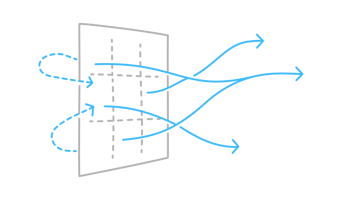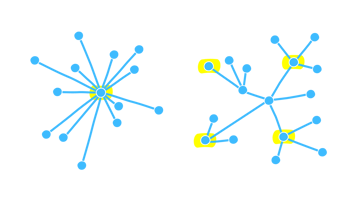In order to promote effective self-management, leaders must look at crucial management functions and define the degree of decentralized authority for the respective functions in the context of their overall organization design.
Defining self-managing organizations
Self-management is still management. Designing your organization to manage itself (or, to put it differently, designing your organization so that people can manage their own work) has to start with the things that good managers do in traditional organizations.
As such, from an organizational perspective, self-management means fulfilling key management functions without relying exclusively on centralized authority, management layers, and top-down management.
This definition of self-management focuses on the structures of management models that enable self-directed work at scale and is therefore very concrete and specific in its outputs. Other key dimensions of new organizational models, such as a strong purpose orientation, are still important, but they’re not the focus of this discussion (and can’t enable self-management on their own).
Effective self-management and the future of work: starting small and starting with organization design
From our experience, serious discussions about self-organization often start in the context of “future of work” or “the way we work” initiatives, which, in turn, are often run by Human Resources.
In such settings, it makes sense to seek ambitious yet practical solutions. Few will pursue radical, all-in self-organization models or follow unproven designs to promote self-management, and rightly so. At the same time, self-management examples from other industries, market contexts, and value creation models can be interesting and informative (and important).
But self-management examples are typically difficult to adopt without adjusting them to your specific situation. And examples of self-management from other industries seldom share the “how to” or allow you to follow the change journey in a simple fashion.
In such a situation, the natural instinct for many will be to start small. HR folks will look for pilots where risks are limited and maturity of concepts is relatively high.
For example, self-directed teams (often also called self-governing or self-leading teams) are among the most proven approaches in the realm of self-management. As such, self-managing teams (whether they follow an agile methodology in the narrow sense or not) are a good place to start self-management initiatives in practice. Examples of self-directed teams provide practical insights.
Self-management in business requires a dedicated organization design for decentralized decision-making
For successful self-management, the actual scope of decentralized authority for a given team will have to be clearly designed.
We’ve designed our Organize for Self-Management Kit with this requirement in mind. The Kit is built to structure and support your self-management project.
The Kit’s starting point is a set of crucial management functions, which must be fulfilled regardless of the degree of decentralization in a given organization. Starting with these functions allows you to take a comprehensive analytical approach and to design precisely what kinds of decisions are made by whom and how.
The self-managing company is not just a fantasy, nor is it the result of a revolution. It is the result of a dedicated and detailed design effort that defines how a decentralized organization makes decisions in line with its strategy.



